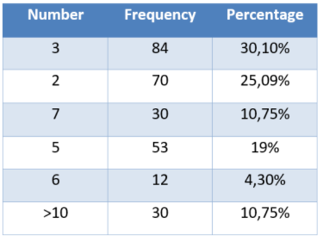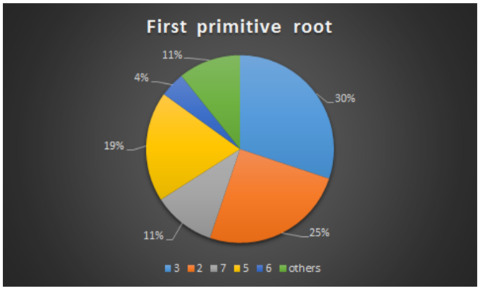LaTeX4Web 1.4 OUTPUT
Even if in section "Primitive roots" we saw that in the third interval there is a major density of primitive roots, when studying them we observe that many numbers had either 2, 3, or 5 as the first primitive root. Hence, we wanted to determine how many numbers had a number smaller or equal than 10 as the first primitive root. To do so, we used the following code to compute the first primitive root of each number:
LaTeX4Web 1.4 OUTPUT
We computed the frequency of each first primitive root and its according percentage:
LaTeX4Web 1.4 OUTPUT
We can also represent this data with a pie chart:
LaTeX4Web 1.4 OUTPUT
Note that the sum of the frequencies is 279 because in the first 1000 integers only 279 actually have primitive roots. We then see that 89,24% of the numbers have a number smaller or equal to 10 as the first primitive root. It is also relevant that the highest first primitive root is 23 and it only appears once. We then conclude that the optimal intervals in which one should start looking for primitive roots are the the first one because although it is the one with the lowest density of primitive roots we have observed that practically all numbers have a primitive root within the first 10 integers, and the third one because there is a higher density of primitive roots.


